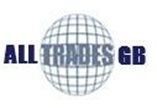Information
-
Audit Title
-
Document No.
-
Client / Site
-
Conducted on
-
Prepared by
-
Location
-
Personnel
3.0 Scope
-
• Ask staff and contractors if they believe the requirements of this FPE apply to them and their work
-
• Ask staff and contractors where this FPE applies.
-
• Ask if it apples to plant, structures, mobile equipment, vehicles or contractors areas<br>
-
• Ask staff and contractors when they believe fall prevention and or protection equipment is required. A sense of their understanding of the scope is essential. For example does this FPE only apply when people are actually W@H or both when they are and when they are not working close to a 1.8 drop or higher
4.0 Accountability
-
• Ask for the people who have been formally appointed to be available for the audit.<br>
-
• Are they aware of their appointment
-
• Are they able to explain and show the auditors how the requirements they are accountable for are implemented and maintained?
4.1 Hazard identification risk assessment and control
4.1.1
-
• Are personnel aware of the survey?
-
• Are they aware of the controls and or corrective actions?
-
• Undertake a site inspection to validate the survey
4.1.2
-
• Are staff who work at height or who direct others aware of local requirements?
-
• Do personnel routinely identify fall hazards and take preventative action regardless of fall distance?
-
• Ask to be shown identified areas
4.1.3
-
• How have W@H tasks been identified and assessed?
-
• How were the control measures selected?<br>
-
• W@H Training, Competency & Assessment Documentation
-
• Training Schedule
-
• Training and Assessment Records
4.2 Selection, Training, Competency and Authorisation
4.2.1
-
• Review the W@H training & assessment records.<br>
-
• Check that personnel hold the required competency for W@H activities and equipment operation.
-
• Has all relevant equipment been considered?
-
• How often are competencies are re-assessed?
-
• Observe personnel and their competency in the field
4.2.2
-
• Do all employees have a basic awareness of W@H risks and requirements?
-
• Go out and ask a selection of staff and contractors their knowledge and if it was covered in the induction
4.3 Communication and awareness
4.3.1
-
• Are personnel provided with adequate instructions prior to commencing W@H tasks?
-
• Do personnel have a level of awareness of W@H risks relative to their exposure / role? Ask to be taken to personnel performing W@H tasks to check
4.3.2
-
• Are barricades and signs available and used to prevent persons from entering areas where work is being conducted at height?
-
• How effective are toolbox talks / meetings in providing W@H information?
-
• What are the informal communication methods used?
-
• Conduct field investigation
4.4 Design, Purchase, Fabrication, Installation and Commissioning
4.4.1
-
• What standard have the purchasing specifications for W@H equipment been based on?
-
• Are purchasing personnel aware of the W@H equipment purchasing specifications?
-
• How relevant personnel are made aware of the purchasing specifications?
4.4.2
-
• How does the auditee ensure that the design of W@H equipment or controls is adequate?
4.4.3
-
• Are authorised anchor point installers appropriately trained? Ask to meet them
-
• Have anchor points been positioned and installed appropriately? Discuss with installer
-
• How is the quality of the installed anchor points checked?
-
• Assess the quality of inspection records.
-
• Does a competent person carry out the inspections?
4.5 Work method and condition control
4.5.1
-
• Is fall prevention being used as the preferred method to control risk? Check in the field
-
• Can personnel explain the hierarchy of controls as it relates to W@H?
4.5.2
-
• Do personnel operating EWP’s have the appropriate operating authority eg recognised ticket/licence?
-
• Ask personnel operating EWP’s what qualifications they hold
4.5.3
-
• Do personnel erecting or dismantling scaffolding have the appropriate licence or ticket? Ask to see it.
4.5.4
-
• Do personnel who use scaffolds understand the SCAFFTAG or equivalent system? Ask them to explain it to you
-
• Is the SCAFFTAG or equivalent system being properly used on scaffolding? Is it used in the field
-
• Does the SCAFFTAG or equivalent system adequately control scaffold usage? Observe in the field
4.5.5
-
• Are safety harnesses attached to an anchor point at all times when used? Observe in the field.
-
• Do personnel understand the requirements for the use of safety harnesses? Ask them to explain to you.
-
• Do personnel inspect harnesses prior to use? What do they look for? (eg. safety latch is working well, stitching is OK and harness not frayed, lanyard attached securely and in good condition etc.) ask for demonstration
-
• Do personnel know what a suitable anchor point is? How anchor points are to be used? Ask them to explain.
4.5.6
-
• Ask for a demonstration of a ladder inspection
-
• Ask for a demonstration or to be taken to where a portable ladder is in use.
-
• Ask for a demonstration on how a safety harness is used with a ladder
4.5.7
-
• Are only fibreglass or wooden ladders being used when performing electrical work or working near electrical installations? Conduct inspection to validate
-
• Are personnel aware of this requirement (especially electricians)? Ask!
4.5.8
-
• Where work at heights is performed personnel check that hand tools are fitted with thongs when in use and all materials and equipment are secured against falling.
-
• Housekeeping practices are applied in elevated work areas. Inspect a sample..<br>
-
• Interviews with personnel demonstrate this requirement to prevent falling objects is understood
4.5.9
-
• Ask to be taken to an area where barricading is in use.<br>
-
• Ask personnel how they know if a barricade is still in use.
-
• Observe if barricading (tape) is present in the plant and what it is being used for.
-
• Is barricading removed once no longer required? Check in the field
4.6 Maintenance
4.6.1
-
• Are the maintenance schedules being adhered to?
-
• Do maintenance personnel clearly understand the servicing requirements?
-
• Are adequate approved spare parts available? Ask to be shown
-
• How is maintenance / repair work recorded? Ask to be shown
-
• What is the general condition of EWP’s? Inspect in the field
4.7 Emergency control
4.7.1
-
• How are rescue plans developed?
-
• How relevant personnel are made aware of the rescue plan?
-
• Are the rescue plans forwarded to emergency services prior to the commencement of work? Do they consider the plans adequate and practicable?
-
• Ask the emergency services personnel to show a W@H plan
4.7.2
-
• Review ER facilities and equipment held on site
-
• Ask off site ER providers their capability and response times
4.8 Monitoring, inspection and audits
4.8.1
-
• Do the equipment inspectors understand the inspection requirements for fall prevention and fall protection equipment? Ask them to show you how they do an inspection
-
• Review the quality of inspection records.
-
• Check the condition of fall prevention and fall protection equipment. Are there any non-conformances that indicate the inspection program needs attention?
4.8.2
-
• Review the quality of records of inspection of fall protection equipment.
-
• Sample the inspection tags on fall protection equipment. Is all equipment tagged and in date?
-
• Do personnel inspect equipment prior to use? What do they look for (e.g. stitching is OK, harness not frayed etc.)? Ask them to show you.
4.8.3
-
• Do inspection records reflect that scaffolding and components are being inspected in accordance with this requirement? Check in the field<br>
-
• Have inspections been recorded on the SCAFFTAG or equivalent system?
-
• Can personnel explain when and why scaffolding must be re-inspected?
4.8.4
-
• How is the quality of the fixed and portable ladders checked? Ask to be shown how it is done.
-
• Assess the quality of inspection records.
-
• Does a competent person carry out the inspections?
4.8.5
-
• Review planned task observation and schedules. Do they specifically incorporate W@H activities, including those undertaken ad-hoc?
-
• Review the records of planned task observations. Are they being performed correctly?
-
• Are there any trends in the non-conformances identified?
-
• Ask personnel what they look for when observing W@H activities. Ask to observe and observer at work
4.8.6
-
• Have the audits verified the quality and effectiveness of the minimum requirements set out in this element?
4.9 Reporting, assessment and corrective actions
4.9.1
-
• Ask personnel to explain what sort of hazards or defects with working at height equipment must be reported.
-
• Check a sample of working at height equipment. Does the condition indicate hazards or defects are being reported and/or actioned?
-
• Review records of hazard / defect reports on working at height equipment and the associated corrective actions.
Conclusion and auditor's comments
-
Date of audit completed
-
Signature of auditor
-
Date of auditor's signature
-
Signature of auditee
-
Date of auditee's signature












